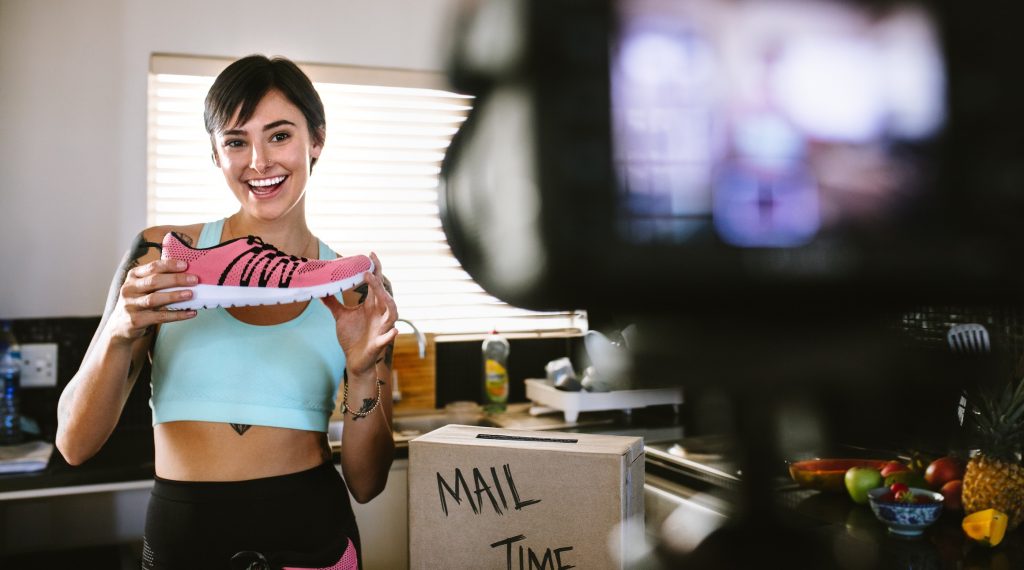admin - 05/26/2021
Influencers have become an important part of an overall marketing strategy - and for good reason. Collaborating with authentic influencers can help a brand build awareness and trust among its target audience, and drive sales. But influencer marketing is undergoing some important changes in 2021. Find out what they are in this blog post.
Influencer marketing uses individuals with a dedicated social media following to drive your brand’s message to your target audiences. An influencer has the power to affect the purchasing decisions of others because of his or her authority, knowledge, position, or relationship with their audience with a following of a distinct niche.
We constantly interact with content produced as a result of influencer marketing on a day-to-day basis, whether we recognize it or not. Influencer marketing has become a popular part of an overall social media and content marketing strategy because it delivers authenticity, helps to cure “ad fatigue,” and puts your brand in front of a whole new audience. Despite initial concerns that influencer marketing might decrease thanks to COVID-19, it’s actually become a larger portion of marketing budgets.
According to Influencer Marketing Hub, as people continue to spend more and more time online, the influencer marketing industry is set to grow to approximately $13.8 Billion this year. This is a steady incline from previous years and the industry is expected to continue that growth trend. In fact, it’s predicted that by 2022, the influencer industry will reach $15 Billion in 2022!

How Influencer Marketing is Changing in 2021
It’s important to know where the influencer marketing industry is heading so you can adapt your marketing strategy. Like any digital marketing tactic, influencer marketing is constantly evolving, and it can be difficult to predict every trend. However, here are some key changes to influencer marketing we’re seeing in 2021 that brands should leverage.
-
TikTok is Giving Instagram Some Competition
While Instagram has traditionally been the prominent platform for influencer marketing, it now competes with TikTok. Prior to the pandemic, TikTok had approximately 35,000 influencers on its platform, but today, there are around 106,000 influencers on the channel.
Why the change? Since the beginning of the COVID-19 pandemic, consumers have shown a preference for video content and TikTok is the perfect platform for short, digestible videos.
TikTok is a great opportunity for brands to reach a wide audience with an authentic influencer message. With its quick videos, the influencer can naturally weave product messaging into an impactful 60 seconds. The channel has the power to make products rise in popularity, resulting in stores selling out in seconds. There have been countless clothing items, beauty products, and toys/gadgets that have gained fame from viral TikTok videos highlighting the product. Even many small businesses have gained success thanks to TikTok videos.
This doesn’t mean you should pivot your whole influencer marketing strategy away from Instagram and onto TikTok, however. Both can play a distinct role in a marketing strategy. Instagram has also introduced its “Reels” feature which gives influencers more ways to utilize video content.
-
Micro and Nano Influencers Are on the Rise
Influencers are categorized by their follower count. Depending on where you look, there are variations to influencer categories, but this is the most popular way to segment influencers:
-
- Nano-Influencers: 1k – 10k followers
- Micro-Influencers: 10k – 100k followers
- Macro-Influencers: 100k – 1M followers
- Mega or Celebrity Influencers 1M+ followers
Recently, nano-influencers and micro-influencers are gaining more and more recognition from brands. Influencers with less than 25,000 followers typically have higher engagement rates than influencers in the macro and celebrity categories. This reinforces a philosophy we always encourage our clients to follow – quality matters more than quantity when it comes to seeing ROI on social media. Brands have been partnering with these two influencer groups more in 2021 because they can secure a high rate of engagement for a lower influencer fee.
-
Influencer Relationships are Being Converted to Ambassador Programs
There has been a switch in the way that brands build relationships with influencers. Rather than one-off influencer partnerships, brands are creating ambassador programs with influencers. By working with a team of trusted influencers on an on-going basis, companies can save time and money streamlining the vetting and content review process. This also ensures that brands consistently have high-quality content being produced to drive brand awareness and engagement.
The process of transitioning from short-term influencer campaigns to a long-term influencer ambassador program does require an upfront strategy and time investment, but the outcome is well worth it. The two most important steps in setting up a successful influencer ambassador program are setting goals and determining an incentive strategy. Keep in mind, there are ways to get creative with paying influencers who are ambassadors. Rather than paying per post, consider offer a product from the brand or gift card.
-
Influencers Are Focuing on Authenticity
Prior to the pandemic, most influencer content was highly edited. However, the work-from-home environment and other challenges brought on by COVID-19 brought a sense of transparency to social media. People found comfort in sharing their struggles and sweatpants. The days of the perfectly manicured feed and polished pictures are behind us. Influencers will likely continue sharing more authentic in-the-moment images. Depending on a brand’s target audience and message, this creates opportunities to build trust.
In today’s changing social media landscape, influencer marketing makes it easy for marketers and brands to adapt to new trends and platforms .If you’re looking to leverage the power of influencer marketing, contact us here to speak with one of our experts.

3E Public Relations Intern Kaitlyn Richel
